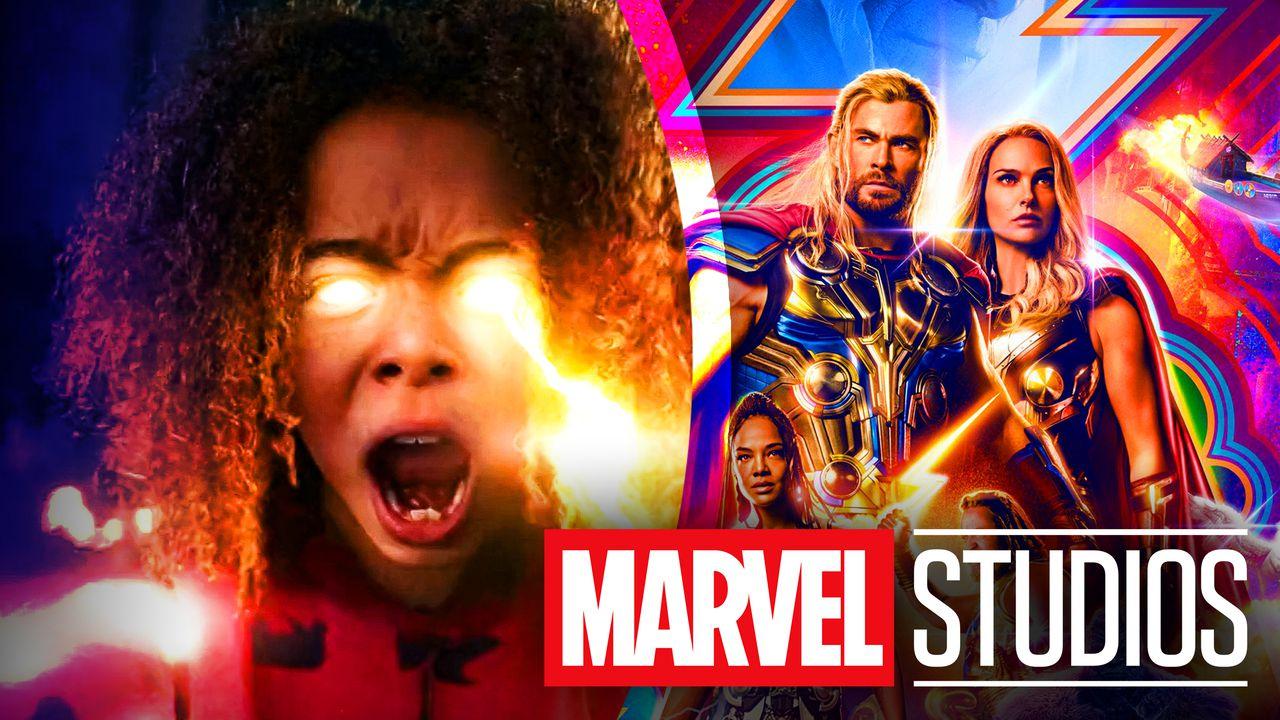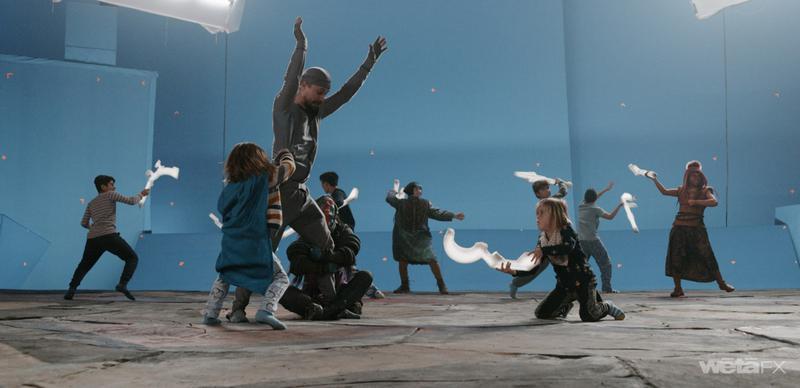
Sometimes, when it comes to kid actors, the result can be a mixed bag. Sure, there are success stories like the cast of Stranger Things, but there are also plenty who don't work out. When it comes to the MCU, one of the more recent child actors to hit the screen was India Rose Hemsworth, aka Love, in Thor: Love and Thunder.
Hemsworth's Love is likely to show up again down the line since she's from Eternity itself.
Another big child performer in Love and Thunder was Keiron L. Dryer, who brought to life the surprise son of Heimdall, Axl. He played the important part of being the key for Thor to communicate with the kidnapped children.
However, it seems that there were a few examples of less-than-stellar child performances in Chris Hemsworth's latest film—audiences just never got to see them.
Replacing Questionable Kid Actors in the MCU
In an interview with befores & afters, Weta FX CG supervisor Jo Davison and compositing supervisor Tim Walker talked about digitally replacing kid actors in Thor: Love and Thunder and what some of the hardest shots were.
Walker admitted that they sometimes "got a better performance out of some digi-kids (CGI doubles of the child actors)." But outside of the children in the scene, the VFX artist brought attention to their work by integrating the lighting between the stage work and matching it to come CGI replacements.
To do so, they used something called match moving, a technique that allows the intersection of computer graphics into live-action footage with the correct position, scale, orientation, and motion relative to the photographed objects in the shot:
“… sometimes there were kids in the background that we got a better performance out of some digi-kids. So they were replaced with digi-kids. But the cool thing about the sequence is, every kid was holding an LED weapon. So they were swinging those around and that gave this unique light interaction to all of the plate characters. Especially them for closeups. So there were match-move components for the weapons."

In reference to the eyes, he noted how they "didn't have to get super-detailed:"
"So the eyes, more kind of the traditional roto[-scoping] approach. Just ’cause of the distance, we didn’t have to get super-detailed with the eyes themselves. And then there was a bit of extra match-moving for any body [tracking] that we needed to add for the hero kids, so we always had a match-move to add that work into. And that kind of stemmed into any interactive light that we needed. We could render something, even if it was just more of a, kind of, helper pass that we could use to track in.”

When asked what the toughest sequence was that they worked on or any particular noteworthy moment, Walker referenced the above scene, revealing how sometimes they'd have about 50 kids in the frame all needing their weapons replaced, among other things:
“... There’s a couple of shots at the beginning of the fight where all the kids are running into battle. And we touched on the LED weapons and they needed to be replaced. And for a couple of the shots, we had about 50 kids in frame at one time. So, the logistics of doing the matching and replacing work was quite substantial. The roto and the paintwork was also quite involved and quite fiddly, but… those two shots probably stood out to me as the hardest challenge.

Walker gave props to their "good team of [compositors]," as well as Angelica Perez Valadez, the "Senior comper" who worked on those shots:
"We had a good team of [compositors], [Angelica Perez Valadez], our Senior comper who was on those shots, made it look easy. A lot of hard work, but purely from an integration perspective, those were probably the biggest challenges for the sequence.”

Davison aimed the spotlight on a different scene: Thor's new goats flying out of New Asgard. He pointed at how "the Rainbow Bridge is building itself and the goats are running over it," something that was "very challenging... from a rendering point of view:"
“Yeah… so we talked a lot about the battle hall shots. But Weta also did a few shots in New Asgard where the boat and the goats are leaving from the dock. So my toughest shot, our toughest moment is actually seated in that sequence. And it’s a shot where the Rainbow Bridge is building itself and the goats are running over it as the boat takes off. And that is a shot, from a rendering point of view, is very challenging."
But why is it particularly challenging? Well, according to Davison, they had "the glass bricks with an emissive source inside with a path trace:"
"You’ve got the glass bricks with an emissive source inside with a path trace renderer. That’s kind of about as hard as it gets, or just a really nice example of a bunch of departments coming together, and putting their heads together, and solving a really tricky problem right at the end of the show. And it’s funny, because I think it’s one of our shots where it was in play right at the start of the show and one of the last shots to go out the door. And I feel like there’s always one of those.”

How the MCU Handled Digital Doubles in Love and Thunder
It's not all surprising to hear that some kids were completely replaced if their acting wasn't all too great. After all, there were quite a lot of kids in those climatic action sequences.
It was previously revealed that stars like Chris Hemsworth, Natalie Portman, and Christian Bale all brought their children in to do work for the movie. Given how many kids are seen on screen, it wouldn't be the biggest leap to assume that many of the cast and crew members may have involved their young ones.
A good chunk of those young actors probably never acted once in their life—so being digitally replaced was probably something Marvel Studios assumed it might have to do at some point or another.
While fans may have issues with Thor: Love and Thunder, most of that chagrin doesn't seem to be aimed at the children of the movie. So it looks like the VFX artists did a great job at hiding any performance hiccups, apart from the often criticized floating head graphic for Heimdal's son.
Thor: Love and Thunder is now streaming on Disney+.












